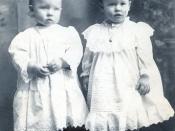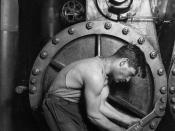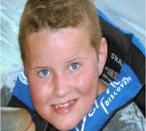Masculinity and Homosexuality on the Cahulawassee River By Phuong Nguyen HBHS Term report James Dickey's early seventies novel Deliverance focuses on four middle aged men on a river trip in Northern Georgia. Ed, Lewis, Drew, and Bobby are the men that take this challenge and in the process get harassed by two hillbillies. One hillbilly rapes Bobby, someone shoots Drew, Lewis brakes a leg, and Ed scales a gorge wall to kill one of the hillbillies. One would say the men had a very traumatic experience. In the end, one sees two scenes in the novel, Ed scaling the wall and Bobby's rape, reflect masculinity and homosexuality. In addition, the characters themselves, specifically Ed, Lewis, and Bobby, show traits of masculinity and homosexuality.
Masculinity has a strong presence in the novel. Lewis, for example, epitomizes manliness because he has a muscular body and is knowledgeable in the woods. Ed, on the other hand, does not have the body or skill of Lewis, but he chooses to use whatever strength he has to scale the cliff and kill the hillbilly.
Ed is not driven by the possibly that the hillbilly would kill him and his companions; rather, he was driven by his yearning to exercise his manhood. Ed says, " (I) enjoy at the thought of where I was and what I was doing"ÃÂ(Dickey pg.137). Ed is strangely turned on by this awful task. By using his body and wits to complete his mission of climbing and killing, Ed satisfies his hunger to feel manlier. One must remember that Ed is a balding, overweight, middle-aged man. Accomplishing this mission gives Ed the notion that he is still capable of strength and cleverness, which are traits of younger, burlier men. Dikey also had a fascination with masculinity. In an interview he said,


